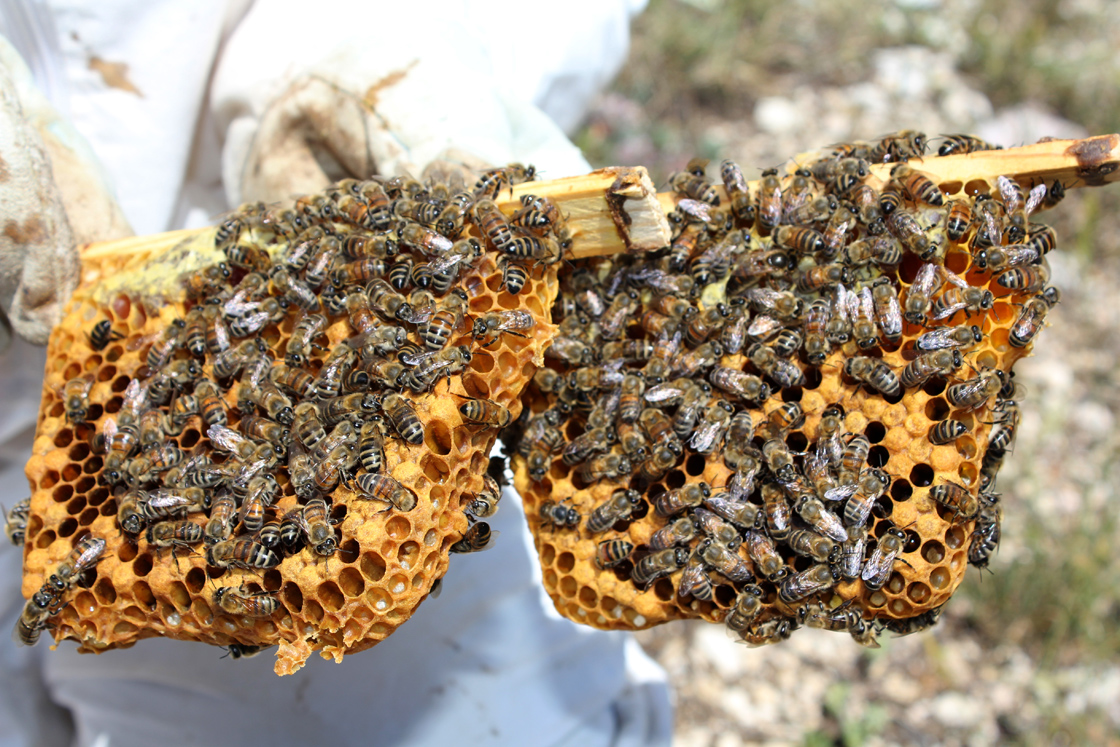The queen bee, or in other words, the mother bee, is the only reproductively capable female individual in honey bee colonies of the Apis mellifera species. There is only one queen bee in the colony, and her presence is indispensable for colony life. The queen bee produces female worker bees from fertilized eggs and male bees (drones) from unfertilized eggs. In this respect, she is considered both the "mother" of the colony and, thanks to individuals originating from unfertilized eggs, its "father".
In terms of body structure, the queen bee can be easily distinguished from worker and drone bees. Her body is long, slender, and shiny, with her abdomen being significantly longer than that of worker bees. Her wings are also larger than those of worker bees. Her stinger is barbless; this allows her to use it repeatedly when necessary. This structure provides her with an advantage when encountering other individuals in the colony.
The queen bee is constantly fed by the "nurse worker bees" surrounding her. She cannot feed herself. These bees carry out the feeding process by offering royal jelly to the queen bee. This social support system is essential for the queen bee to continuously lay eggs at a high rate.

Image of Honeycomb Related to Queen Bee Breeding (AA)
Duties of the Queen Bee and Pheromone Secretion
The queen bee has two main duties:
- Laying Eggs: A young and healthy queen bee can lay 1,500–2,000 eggs per day, depending on seasonal conditions. Colony size and productivity are directly dependent on this egg-laying capacity.
- Secreting Pheromone: The queen bee maintains social order in the colony with the queen pheromone she secretes from glands in her mandibles. This pheromone:
- Suppresses the rearing of new queen bees,
- Prevents the formation of false queens (laying workers),
- Encourages worker bees to perform division of labor,
- Maintains unity and harmony within the colony.
Queen bee pheromone chemically consists of unsaturated fatty acids such as 9-oxodec-trans-2-enoic acid, and bees spread this signal throughout the entire colony by making contact with each other.
Effect of the Queen Bee on the Colony
The overall condition of the colony is directly dependent on the biological quality and genetic potential of the queen bee. The queen bee determines many aspects of the colony, such as:
- Spring development rate,
- Pollen and nectar collection efficiency,
- Wintering success,
- Swarming tendency,
- Disease resistance,
- Behavioral calmness.
Each of these characteristics directly or indirectly affects the colony's annual honey production and sustainability.
For example, an old or low-quality queen bee lays more unfertilized eggs due to a decrease in the number of sperm in her spermatheca. This increases the proportion of drones in the colony while decreasing the number of worker bees, thereby reducing productivity.

Queen Bee Breeding (AA)
Factors Affecting Queen Bee Quality
Factors affecting queen bee quality are grouped into two categories: genetic and environmental.
Genetic Factors
- Genetic structure of the queen bee and the drones she mated with,
- Applied breeding and selection programs,
- Genetic purity and accurate mating rate.
Environmental and Rearing Factors
- Larva transfer age and time,
- Rearing season,
- Characteristics of nurse colonies,
- Presence of sufficient and high-quality drones in the mating area,
- Disease and stress factors encountered during rearing.
Physical quality indicators include emergence weight, spermatheca volume, sperm count, and the time until egg-laying begins. These indicators are the main parameters determining the queen bee's acceptance rate and in-colony performance.
Queen Bee Rearing and Its Economic Importance
Considering the increasing number of colonies in Türkiye and the necessity of replacing queen bees every two years, approximately 4 million new queen bees are needed annually. However, current production is far below this. The annual number of queen bees reared in Türkiye remains below 400,000.
Widespread use of low-quality queen bees leads to a decrease in colony productivity and economic losses for beekeeping enterprises. Indeed, quality analyses have shown that most commercial queen bees are insufficient in terms of live weight, sperm count, and fertilization rates.

Farm Engaged in Queen Bee Rearing (AA)
Colonies managed with high-quality queen bees:
- Are longer-lived,
- Provide higher yields in products such as honey, pollen, and royal jelly,
- Are resistant to diseases,
- Are more resilient to transport in migratory beekeeping.
The queen bee is the carrier of the colony's genetic structure and the regulator of its social organization. The quality of this single individual, which is decisive for colony success, affects the productivity of all beekeeping activities.


